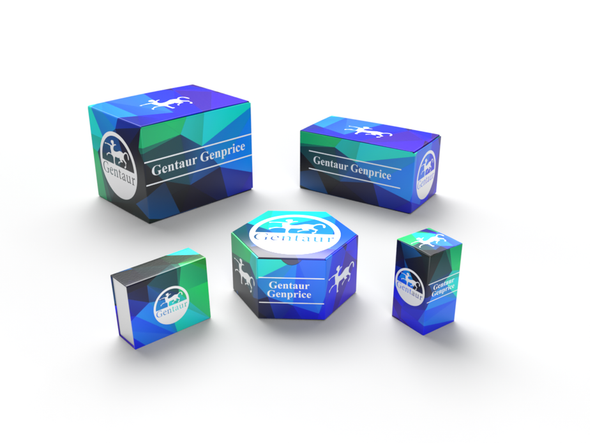BW
c-TAK1 (P8) polyclonal Antibody | BS1969
- SKU:
- BW-BS1969
- Availability:
- Usually ships in 5 working days
Description
c-TAK1 (P8) polyclonal Antibody | BS1969 | Gentaur UK, US & Europe Distribution
Host: Rabbit
Reactivity: Human,Mouse,Rat
Application: WB IHC
Application Range: WB: 1:500~1:1000 IHC: 1:50~1:200
Background: c-TAK1 (Cdc25C associated protein kinase) phosphorylates Cdc25C on Ser 216 and is ubiquitously expressed in various human tissue and cell lines. C-TAK1 is distinct from Chk1, which also phosphorylates Cdc25C on Ser 216 in response to DNA damage. Phosphorylation of Cdc25C allows for the preferential binding of 14-3-3 proteins, subsequently retaining Cdc25C in the cytoplasm. Thus, the binding of 14-3-3 proteins prevents Cdc25C from dephosphorylating Cdc2 in the nucleus, thereby controlling the entry of the cells into mitosis. It is suggested that C-TAK1 mediates the binding of the 14-3-3 proteins through its kinase activity and acts as a negative regulator of mitosis.
Storage & Stability: Store at 4°C short term. Aliquot and store at -20°C long term. Avoid freeze-thaw cycles.
Specificity: c-TAK1 (P8) polyclonal Antibody detects endogenous levels of C-TAK1 protein.
Molecular Weight: ~ 87 kDa
Note: For research use only, not for use in diagnostic procedure.
Alternative Names: C-TAK1; Cdc25C associated protein kinase 1; Cdc25C-associated protein kinase 1; cTAK1; ELKL motif kinase 2; EMK-2; Emk2; ETK 1; KIAA4230; KP78; MAP microtubule affinity regulating kinase 3; MAP/microtubule affinity-regulating kinase 3; Mark3; MARK3; Par 1a; PAR1A; Protein kinase STK10; Ser/Thr protein kinase PAR-1; Serine threonine protein kinase p78; Serine/threonine-protein kinase p78; SerThr protein kinase PAR 1; CTAK1
Immunogen: Synthetic peptide, corresponding to the N-terminal of Human c-TAK1.
Conjugate: Unconjugated
Modification: Unmodification
Purification & Purity: The Antibody was affinity-purified from rabbit antiserum by affinity-chromatography using epitope-specific immunogen and the purity is > 95% (by SDS-PAGE) .
Pathway:




![C-TAK1 Antibody [Polyclonal] | PC-109 C-TAK1 Antibody [Polyclonal] | PC-109](https://cdn11.bigcommerce.com/s-1rdwiq712m/images/stencil/590x590/products/441179/446008/gentaur-genprice__26005.1661610467__29809.1661628092__75433.1661676199__77988.1661684280__64362.1661692443__02085.1662049603__45075.1662119302__91744.1662191540__21580.1662291419__23711.1663312685.png?c=1)

